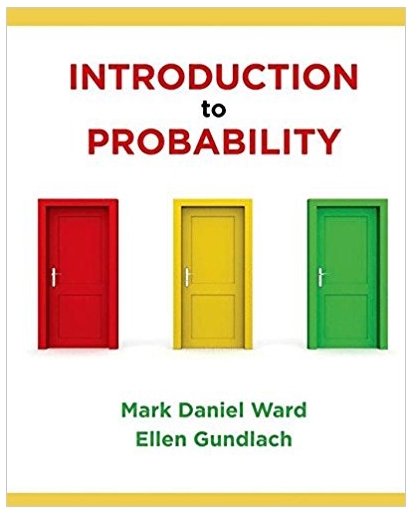Answered step by step
Verified Expert Solution
Question
1 Approved Answer
1 (13 marks) The length of human pregnancy from conception to birth can be modeled as a distribution that is fairly normal with a mean
1 (13 marks) The length of human pregnancy from conception to birth can be modeled as a distribution that is fairly normal with a mean of 266 days and standard deviation 16 days. Please answer the following questions. a) What will be the shape the distribution. Calculate in days, the values of the relevant variable at 1, 2, and 3 standard deviations from the mean. b) According to this model, what percentage of human pregnancies last longer than 280 days? Please interpret your answer. c) Approximately 7 % of infants are premature. Using this model, find the pregnancy time that would result in a premature birth. Please interpret your answer. d) A random sample of 16 individuals is selected from the population of pregnant woman. Let X be the average pregnancy length of these 16 individuals. What will be nature the distribution of X and its two parameters. Explain in brief. e) What is the probability that the 16 individuals in part (d) will have an average pregnancy length longer than 275 days? Question 2. (12 marks) The inorganic mercury content in a single cigarette of a particular brand A is a random variable with mean 25 ng and a population standard deviation of 12 ng. A random sample of size 100 cigarettes is taken for analysis. a) What is the approximate distribution of the sample mean? Explain briefly. b) The inorganic mercury content for a cigarette is considered high when the content is greater than 27 ng. What is the probability that the resulting sample mean content will be greater than 27 ng? c) Now suppose that the market analyst would like to test another brand B of cigarettes and selects a random sample of size of also 100 cigarettes from a population with mean inorganic mercury content 26 ng and a population standard deviation of 5 ng. What is the probability that the sample mean content will be greater than 27 mg for this brand? d) Based on the above analysis of the sample means, which is a less harmful brand, A or B. Explain with numbers. Would that also be true for individual cigarettes of the true brands? 1 Question 3 (6 marks) You flip a fair coin thirty-six times and record the proportion of heads you obtain. You then repeat this process of flipping the coin thirty-six times and recording the proportion of heads obtained for many, many such trials. When done, you make a histogram of your results. a) About where will the center of your histogram be? Use appropriate notation to describe this fact. b) What is the standard deviation of the sampling distribution of the proportion p of heads obtained? c) Describe the shape of the sampling distribution of p . Justify your answer. Question 4 (9 marks) A College Alcohol Study finds that 67% of college students support efforts to \"crack down on underage drinking.\" The administration of a large college recently conducted a SRS (simple random sample) of 100 students and found that 59 of them support the crackdown on underage drinking. a) What is the sample proportion who support a crackdown on underage drinking? b) Assuming that the proportion of all the students on the campus who support a crackdown is also 67%, what is the probability that the proportion in an SRS of 100 students is less than or equal to the proportion found in the administration's sample? Be sure to check all necessary conditions required for your calculation. c) Based on your calculations in part 'b', what can you say about your assumption? Explain. 2
Step by Step Solution
There are 3 Steps involved in it
Step: 1

Get Instant Access to Expert-Tailored Solutions
See step-by-step solutions with expert insights and AI powered tools for academic success
Step: 2

Step: 3

Ace Your Homework with AI
Get the answers you need in no time with our AI-driven, step-by-step assistance
Get Started


